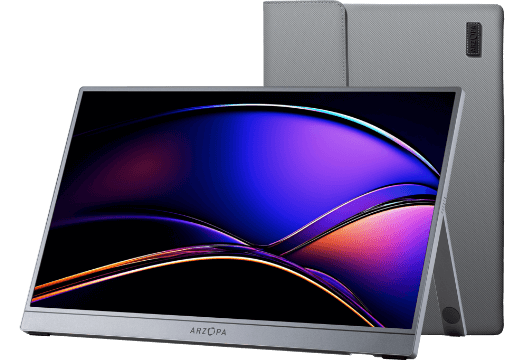Managing multiple monitors on macOS can greatly enhance your productivity and workflow. However, the process of making a window span across multiple monitors may not always be straightforward. In this comprehensive guide, we will walk you through the steps to seamlessly span windows across multiple monitors on macOS, discuss the evolution of multi-display support over the past few major updates, and provide tips for optimizing your dual-monitor setup.
Preparing Your macOS for Multi-Monitor Window Spanning
System Settings Walkthrough
To access and disable the 'Displays have separate spaces' feature in the latest macOS version, follow these steps:
- Click on the Apple logo in the top left corner of your screen and select "System Settings" from the dropdown menu.

- In the System Settings window, click on "Displays" from the left sidebar to open the Displays settings.

- In the Displays settings, click on the "Arrangement" tab and uncheck the box next to "Displays have separate spaces." This will allow you to span a window across multiple monitors.
- After unchecking the box, you can verify that the feature is disabled by moving a window to the edge of one monitor. If the window spans across to the adjacent monitor, then the feature has been successfully disabled.
Alternative Methods for Older macOS Versions
In macOS versions prior to High Sierra (10.13), the process for disabling 'Displays have separate spaces' was slightly different:
- Navigate to the Apple menu and select "System Preferences," then click on "Mission Control" to access the relevant settings.

- In the Mission Control preferences window, uncheck the box labeled "Displays have separate spaces."

- To arrange your displays, click on the "Arrangement" tab within the Mission Control preferences and drag and drop your display icons to set their relative positions.

Starting from macOS High Sierra (10.13), the process remains similar to the current implementation, with the addition of more advanced window management features.
The Drag & Span Technique
To make a window span multiple monitors on macOS, follow this precise method:
- Identify the window you want to span across multiple monitors.
- Move the window to the edge of the primary monitor where you want it to start spanning.
- Hold the mouse button down on the window's title bar.
- Drag the window towards the edge of the primary monitor. As you approach the edge, macOS will automatically detect the presence of the second monitor and allow you to continue dragging the window onto it.
- Look for the visual cue of the window's border changing from a solid line to a dashed line, indicating that the window is ready to be spanned.
- Release the mouse button once the window is positioned across both monitors.
While there are no specific keyboard shortcuts for spanning a window, you can use Command + Shift + → or Command + Shift + ← to move the window left or right, aiding in the positioning process.
Advanced Window Management Tools
To further enhance your multi-monitor window spanning experience, consider using third-party window management tools. Some highly recommended options include:
- SizeUp: Easily resize and reposition windows across multiple monitors with keyboard shortcuts and custom window sizes.
- Magnet: Offers extensive customization options, window snapping, and customizable keyboard shortcuts for multi-monitor setups.
- Alfred: Includes window management features and allows for custom workflows and hotkeys to quickly move and resize windows.
- Hazel: A powerful automation tool that can create custom workflows for window management based on window sizes, positions, and other criteria.
- Stay: Specifically designed for multi-monitor setups, allowing easy window movement and custom window layouts.
These tools can be downloaded from their respective official websites or the Mac App Store and installed via .dmg files or directly from the App Store.
Also see: Arzopa Z1FC 144Hz Portable Gaming Monitor Full Review
Extend your screen at the office, at home or on the go with this convenient, compact display. Conveniently set up your monitor to the left, right or behind your laptop. The dual USB-C ports on each side allow for versatility and better portability.
Arzopa Z1FC 144Hz Portable Gaming Monitor 16.1" Screen

- 16.1 Inch Full HD (1920x1080p) IPS with a premium aluminum design.
- 1.7 lb weight and 0.3-inch thickness make it ideal for on-the-go use.
- Supports PS5, Xbox, Switch, Steam Deck, PCs, phone, and more.
- Includes a built-in stand for both portrait and landscape viewing.
Troubleshooting Common Issues
When trying to span windows across multiple monitors, you may encounter some common issues. Here are a few problems and their solutions:
- App Compatibility Issues: Some older applications may not support window spanning. Check the application's settings for multi-monitor support options or consider updating to a newer version.
-
macOS Updates Causing Window Management Issues: After an update, restart your system and reset the NVRAM and SMC by holding
Command + Option + P + Rwhile powering on your Mac for 20 seconds. - Incorrect Display Settings: Ensure all monitors are properly connected and detected. Go to System Preferences > Displays and arrange your displays in the desired configuration.
- Resolution and Scaling Issues: Set all monitors to the same resolution or use the "Scaled" option in System Preferences > Displays to find a common resolution. Third-party utilities can also help manage different resolutions simultaneously.
-
Window Snapping Issues: Disable window snapping by holding the
Optionkey while dragging a window to the edge of a monitor, allowing it to span without snapping to a single edge.
Optimizing Your Dual-Monitor Setup
To maximize productivity in your dual-monitor macOS setup, consider the following best practices:
- Display Calibration: Match display settings, including resolution and brightness, and calibrate color settings for consistency.
- Menu Bar Management: Set the menu bar to appear on both screens or on one specific screen and customize it by removing or rearranging items.
- Software Settings: Use window management software, split-screen features, multiple desktops, and strategic application placement to optimize your workflow.
- Additional Tips: Utilize keyboard shortcuts, place monitors at a comfortable distance and angle, and organize cables to reduce clutter.
Conclusion
By following the steps and best practices outlined in this guide, you can effortlessly make windows span multiple monitors on macOS, enhancing your productivity and streamlining your workflow. Experiment with different window management tools and configurations to find the setup that best suits your needs. Don't forget to share your own tips and experiences in the comments section below, and feel free to share this article with others who may benefit from mastering multi-monitor window spanning on macOS.


























